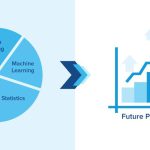Generative Artificial Intelligence (AI) is transforming scientific research, breaking barriers that once limited the pace and scope of discovery. By leveraging the ability to create, simulate, and predict, generative AI has opened new dimensions in scientific innovation. Here’s an in-depth exploration of how generative AI is empowering scientific research.

1. Accelerating Drug Discovery and Development
The process of discovering new drugs has traditionally been time-consuming and costly, often taking years of experimentation and clinical trials. Generative AI is reshaping this landscape:
- Molecular Design: Generative AI models, such as DeepMind’s AlphaFold and IBM’s RXN for Chemistry, can design novel molecular structures based on desired properties, expediting the search for effective drugs.
- Predictive Modeling: AI predicts how new compounds interact with biological systems, reducing the need for extensive lab testing.
- Repurposing Existing Drugs: Generative AI identifies alternative uses for existing drugs by analyzing chemical and biological data.
These advancements significantly reduce costs and time in pharmaceutical research.
2. Enhancing Climate and Environmental Research
Generative AI is instrumental in tackling global challenges like climate change and environmental degradation:
- Climate Modeling: AI generates highly detailed climate simulations, predicting the impact of policy decisions and natural phenomena.
- Wildlife Conservation: Generative AI analyzes biodiversity data and simulates scenarios to optimize conservation efforts.
- Renewable Energy Solutions: AI aids in designing more efficient solar panels, wind turbines, and other renewable energy technologies by generating optimized designs.
This allows researchers to address environmental issues with greater precision and efficiency.
3. Advancing Space Exploration
Space exploration requires innovative solutions for understanding complex phenomena and environments. Generative AI is making significant contributions:
- Simulating Space Phenomena: AI generates models of black holes, star formations, and cosmic events, helping scientists study the universe in unprecedented detail.
- Autonomous Space Missions: Generative AI designs and simulates autonomous systems for space rovers and spacecraft.
- Astronomical Data Analysis: By generating synthetic astronomical datasets, AI enhances the study of celestial bodies and phenomena.
Generative AI enables scientists to explore the cosmos with advanced tools and models.
4. Revolutionizing Material Science
The development of new materials is critical for industries ranging from construction to electronics. Generative AI is at the forefront of material innovation:
- Designing Novel Materials: AI generates potential material compositions with desired properties like strength, flexibility, or conductivity.
- Simulating Material Behavior: Researchers use AI to predict how materials perform under different conditions, reducing the need for physical testing.
- Sustainable Materials: AI aids in creating eco-friendly alternatives to traditional materials, supporting sustainability goals.
These innovations accelerate the development of next-generation materials.
5. Simulating Biological Systems
Understanding complex biological systems is crucial for advancements in medicine, agriculture, and biotechnology. Generative AI plays a pivotal role:
- Genome Editing: AI generates predictive models for gene editing techniques like CRISPR, ensuring precision and safety.
- Cellular Simulations: Researchers simulate cell behavior under various conditions to study diseases and test treatments.
- Synthetic Biology: AI designs synthetic organisms with specific functions, such as bacteria that produce biofuels or clean up pollutants.
Generative AI bridges gaps in biological research, leading to groundbreaking discoveries.
6. Overcoming Data Scarcity with Synthetic Data
Data is the backbone of scientific research, but some fields face challenges due to limited or inaccessible datasets. Generative AI addresses this issue:
- Synthetic Dataset Creation: AI generates high-quality synthetic data for training machine learning models or conducting experiments.
- Enhancing Data Diversity: By creating variations of existing data, AI improves the robustness of scientific analyses.
- Privacy Preservation: Synthetic data allows researchers to share insights without compromising sensitive information.
This empowers researchers to work effectively even in data-scarce environments.
7. Enabling Interdisciplinary Collaboration
Generative AI fosters collaboration across disciplines by providing tools and insights that bridge gaps:
- Visualizing Complex Concepts: AI-generated visualizations help researchers from different fields understand complex phenomena.
- Cross-Disciplinary Applications: For example, AI-generated models used in physics can be adapted for applications in medicine or engineering.
- Language Translation: AI tools break language barriers, allowing researchers from around the world to collaborate seamlessly.
This accelerates the integration of diverse perspectives and expertise.
8. Addressing Ethical Challenges in Scientific Research
While generative AI offers immense potential, it also raises ethical considerations:
- Bias in Models: AI models must be trained on diverse datasets to avoid bias in scientific outcomes.
- Accountability: The use of AI-generated results requires transparency to ensure reproducibility and reliability.
- Misuse of Technology: Safeguards must be in place to prevent the misuse of AI-generated tools or data.
By addressing these challenges, researchers can harness the full potential of generative AI responsibly.
Conclusion
Generative AI is revolutionizing scientific research by enabling faster, more efficient, and innovative approaches to complex problems. From drug discovery to climate modeling, space exploration, and material science, its applications span nearly every field of study. While challenges remain, the possibilities are boundless when paired with ethical considerations and responsible usage.
Generative AI is not merely a tool; it is a transformative force that is reshaping the future of science and humanity’s ability to understand and improve the world.


